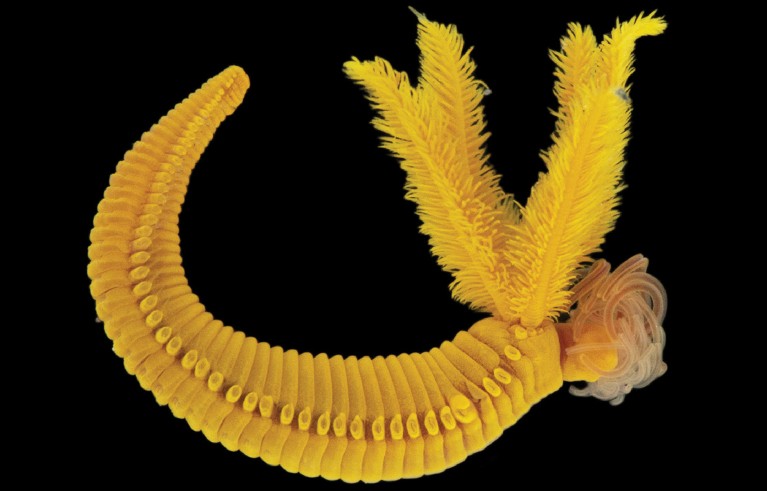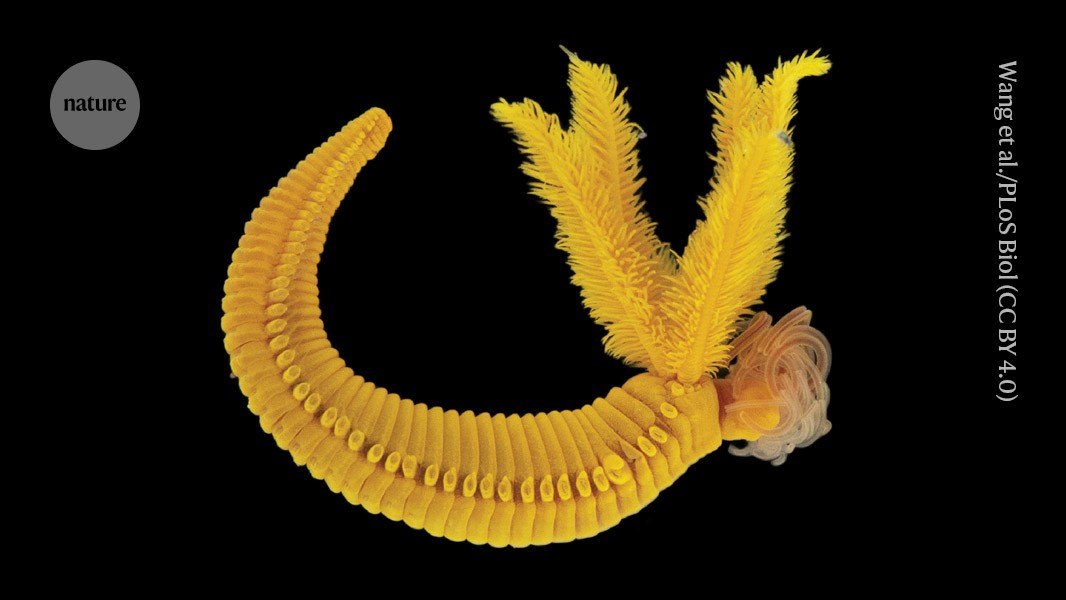
Paralvinella hessleri accumulates microscopic particles of arsenic on its outer skin, which reacts with sulfide to form a microscopic armour of yellow orpiment.Credit: Wang et al./PLoS Biol (CC BY 4.0)
A bright-yellow worm that lives in deep-sea hydrothermal vents is the first known animal to create orpiment, a brilliant but toxic mineral used by artists from antiquity until the nineteenth century. The findings1 were published in PLoS Biology this week.
The worm (Paralvinella hessleri) is the only creature to inhabit the hottest part of deep-sea hydrothermal vents in the Okinawa Trough in the western Pacific Ocean. The hot, mineral-rich water that shoots up from the sea floor contains high levels of toxic sulfide and arsenic.
Researchers found that the worm accumulates microscopic particles of arsenic on its outer skin cells as well as along its internal organs. This reacts with sulfide from the hydrothermal vent to form small clumps of orpiment, fashioning a microscopic armour around the worm that protects it from the toxic environment.
Orpiment is a naturally occurring arsenic sulfide mineral, often found in hydrothermal and magmatic ore deposits.
The findings came as a surprise to the research group. In the deep sea, creatures dwell in total darkness and are typically grey-ish white or adorned in hues of orange to dark red, says co-author Hao Wang, a deep-sea biologist at the Chinese Academy of Sciences in Qingdao. It “doesn’t make any sense to make pigment in total darkness,” Wang says.
Unknown mechanism
The team is yet to discover how arsenic is transported into the creature’s internal organs.


